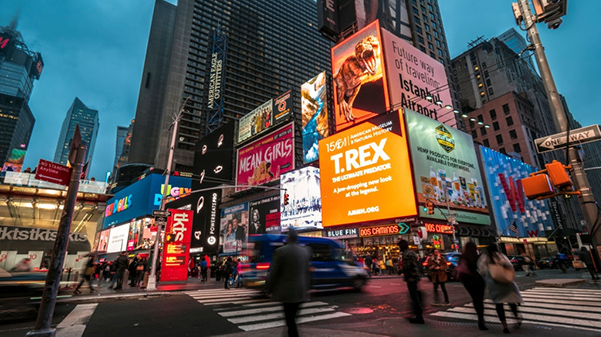We often hear the debate of which is better for marketing, billboards, or social media. The answer is that it depends on your specific campaign and what you are trying to achieve.
Although we live in a world where people rarely stay in one place for long, location-based marketing is still as important as ever, if not more so.
Both geo targeting and geofencing are forms of geolocation marketing—advertising that targets consumers in a specific area. With so many people on the go, companies can use these marketing strategies to generate new leads wherever their customer base may be.
While you’ll hear the term “geo” tossed around interchangeably in marketing meetings, they’re not the same thing. To that end, choosing between geo targeting vs geofencing can make or break a successful ad campaign, and it’s crucial to understand the difference between the two when allocating your budget.
What Is Geofencing?
Geofencing is a digital marketing practice that refers to using IP addresses and GPS to create a virtual “fence” around a specific area. After you draw the boundaries of your geofence, anyone who enters the chosen radius will receive your ads on:
- Smartphones
- Computers
- Tablets
If you’ve ever been to a festival or sports game and seen an event-specific filter on Instagram or Snapchat, you’ve experienced geofencing firsthand Only those within the geofence see the filter. Your friend across the country would never even know it existed.
The same is true of geofenced advertising. Geofencing advertisements can appear in a variety of forms. However, the most popular geofencing ads include:
- Pay-per-click ads
- Social media feed ads
Additionally, because you can set a reliable geofence radius as small as 50 meters (about 150 feet), you can essentially hone in on a specific business or event.1
What is Geo Targeting?
Like geofencing, geo targeting is a form of advertising that targets consumers in a chosen location.
But unlike geofencing, geo targeting lets you direct your ads toward people that meet the specific criteria you set out. Depending on the target demographic of your product or service, you might advertise directly to high-income homeowners in a Boston neighborhood or to fans after they exit your local hockey arena.
With geo targeting, you choose which interests and behaviors you want to target as well as which location.
Although geo targeting is a tactic in online marketing, it also refers to out-of-home advertising (OOH). Think of a mural painted on the building across from a hospital with an ad for nursing shoes- These are outdoor advertising options, more specifically known as geo targeting, at work.
When to Use Geo Targeting vs Geofencing
Both types of outdoor advertising known as geo targeting and geofencing can be used in tandem with an OOH campaign to convert a potential customer into a paying one, but they perform best in specific situations.
Geo Targeting
Geo targeting is all about finding the right customer through a personalized approach that combines location and data. So if you already know who your customers are, geo targeting works wonders.
For example: A car-sharing company begins running ads on bus stops in a suburb. They are using location (the bus shelter) and demographic information to target their ideal customer base—people who take public transit. To take this example into the digital realm, the company could assume people living near metro stations take the train, then run ads to those homes.
Geofencing
Geofencing, on the other hand, is more about creating an opportunity. You’re casting a net in an area in the hopes that it reaches interested people who happen to be in the area.
For example: Let’s say you run a smoothie stand that caters to fitness enthusiasts. You could set up a geofence around a nearby yoga studio. That way, anyone who comes within range of the studio would be served an ad or a coupon for your smoothies. You’re now creating brand awareness among potential consumers who would have otherwise been unaware. Considering that 72% of customers say they’ll complete the call to action if the business is nearby, geofencing is an effective way to attract local customers.2
In terms of out-of-home marketing, geofencing has little practical use. With that said, companies have built creative campaigns by combining large digital billboards with geofencing.
Picture this: Whenever someone enters the virtual fence around a billboard’s physical location, they receive a push notification to their mobile phone. From there, maybe they interact with the digital billboard by sending up a personal message—there are all kinds of outside-the-box possibilities.
How do Geofencing and Geo Targeting Compare?
While geo targeting and geofencing both have their applications, one may be better for your company depending on your objectives:
- Geo targeting – Geo targeting is a more effective strategy because it accounts for location and consumer data. If your primary clientele is women aged 30-45, you can cater your location-based ads to that population only.
- Geofencing – With geofencing, you run the risk of spending money advertising to uninterested customers just because they’re in a certain location. Geofencing doesn’t differentiate likely customers from unlikely ones. Instead, it serves your ads to everyone. However, if you’re looking to target hungry ballpark attendees after a big game, geofencing could hit your marketing strategy out of the park.
However, ultimately geofencing is less accurate—and therefore a less productive use of your advertising budget.
Reach the Right People with True Impact’s OOH Advertising
At True Impact, we’re experts at maximizing your ad spend so you can reach as many of your target audience as possible. Out-of-home advertising is a tried-and-true form of geo targeting, and it’s a valuable one, too.
What better way to deliver ads to a specific location than with an eye-catching billboard or banner?
True Impact Media has all of the resources you need when it comes to OOH. Whether you are wondering what does reach mean in OOH advertising campaigns or how to calculate impressions, we have you covered. If you’re ready to create a next-level marketing campaign, we’d love to help you get there. Get in touch with us today to find out more about the importance of outdoor advertising.
Sources:
- YourMapp. Geofence limitations. https://www.yourmapp.com/faq/geofence-limitations/
- Linchpin. The Beginner’s Guide To Geomarketing And Geotargeting Marketing Success. https://linchpinseo.com/guide-to-geomarketing/




